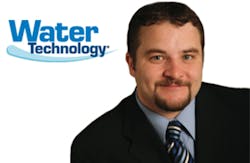We often cover news topics that highlight local debates about water treatment. Although these current event topics range, people’s passion hardly varies. To this point, I received the following letter from a reader who shares a recent decision in his community. Paul “Gus” Davis of Water Conditioning Master offers the following:
“Municipal reverse osmosis (RO) seems to be a growing issue. We have experienced the construction of two RO plants locally. These facilities were sold with incomplete information to elected officials unfamiliar with and unwilling to seek additional information regarding application, efficiency, costs and subsequent potential problems with RO at the municipal level. The main purpose of the two plants was sold to control iron and manganese.
The engineering firm previously had acknowledged and dismissed as unimportant the wasteful process, 16-30 percent, of RO at the municipal level. Very expensive drinking water is now being used to flush toilets and water lawns. RO water is now accelerating the failure of aging and previously ignored distribution systems.
One ‘benefit’ locally, undisclosed to the public, was to reduce wastewater phosphorous discharge violations. This gives false credibility to the idiocy of ‘the solution to pollution is dilution.’ Our problems are waste, waste and our waste stream, as well as unsustainable withdrawal from diminishing, fossil aquifers.
We keep punching wells deeper for volume and reduced contamination because we contaminated the sources closer to the surface. In turn, we begin the process of contaminating deeper source. [Other technologies are available with] ever-improving efficiency that [are] far more cost effective.
Municipal RO requires the treatment of every drop in the system. Locally to treat 1,000 gallons of 7-10 gpg municipal RO water requires 160-300 gallons of waste water that must have additional chemicals added, attacks the distribution network and adds additional stress to our obsolete wastewater treatment approach. All of these expenses are being funded 100 percent by taxpayers/ratepayers saddled with horrendous debt at every level of government. Wake up America.”
Obviously, not all treatment situations are appropriate for all situations and each location must manage their water treatment based on the needs of their particular requirements. Today, issues like salt regeneration as well as waste water and energy issues are guiding decision-makers. I wanted to highlight a portion of this recent Letter to the Editor this month to encourage others to send in their feedback about local trends and issues. As water treatment professionals with advanced knowledge of your region’s critical issues, it is important to share your thoughts on such topics.



